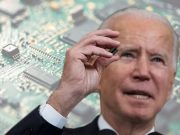I learned as I grew that A.I. involves much more than robots. The actual implementation of A.I. technology is advanced enough now to mimic human behavior and language, and it does so in incredibly creative ways. It has become increasingly useful in many situations, including almost every stock market sector and/or industry. The technology has grown so quickly that, as we speak, more than 75% of the devices people use already implement A.I. in some way (sometimes without us knowing it). In the meantime, businesses are saving money, algorithms are opening up possibilities, and many are working to find more ways to use machine learning and cognitive analytics, the biggest and most important parts of AI.
The term “artificial intelligence” is really a field of science that includes not only computation but also linguistics, philosophy, and human psychology. The ultimate goal for those working with AI is to teach computers how to perform tasks that humans would otherwise be doing. Intelligence in this context is being able to think abstractly, including the ability to plan, learn, and adapt, as well as sense and form a perception of reality and knowledge so that it can communicate naturally and solve problems, just as humans do. AI is considered “narrow” right now because it is usually designed to do specific tasks but it can’t explain why. If AI does become self-aware and develops emotions, we could have some reasonable concerns. For now, though, its only function is assisting us in our daily lives, and it’s very cool.
I went through big names in tech with undervalued pricing that use A.I. to their benefit. These businesses have what I look for when making recommendations: strong fundamentals, balance sheets, confidence, and positive forecasts from analysts. Join me while I break down these three A.I. tickers that make for intelligent portfolio picks:
Advanced Micro Devices Inc. (AMD)
Advanced Micro Devices Inc. (AMD) is all about the business of semiconductors and has several business divisions. AMD’s “Computing and Graphics” subsegment comprises some of its most popular products. This includes processors and chipsets for desktops and laptops, as well as separate and built-in GPUs and professional GPUs (Graphics Processing Units). AMD‘s “Enterprise,” “Embedded,” and “Semi-Custom” segments include embedded processors, software development services, semi-custom System-on-Chip devices, and the necessary hardware for console gaming. Established in 1969, with headquarters in Santa Clara, CA, AMD was formed by W. J. Sanders III on May 1st of that year.
AMD is expected to finish off its fiscal year with $5.5 billion in sales at 67 cents per share, and that’s only for its Q4. Based on AMD’s trailing twelve-month (ttm) performance at the time of writing, the chipmaker’s success is evident when seeing its market cap of $120.8 billion, revenue of $22.8 billion, EPS (earnings per share) of $1.67, EBITDA (Earnings Before Interest, Taxes, Depreciation, Amortization, etc.) of $5.6 billion, a net profit margin of 46.55%, and a forward P/E ratio of roughly 24x. Despite being at the bottom of its 52-week range, AMD is up roughly 15% year-to-date. This makes for an interesting situation, as it’s still considered under fair, or intrinsic, value. Analysts who offer yearly pricing estimates have given AMD a consensus median price target of $85, with a high of $200 and a low of $60. If it were to reach the upper point of its range, AMD could see a potential price increase of 168.25%. Analysts also agree that we should buy and hold stock in AMD.
Tesla Inc. (TSLA)
Tesla Inc. (TSLA)’s EVs (Electric Vehicles), as well as its energy generation and storage technologies are popular worldwide. TSLA’s primary business concerns are energy generation and vehicle manufacturing. TSLA’s automotive segment sells EVs and government-required credits. TSLA sells cars and SUVs directly or pre-owned, which have in-app upgrades like one’s mobile phone would. Tesla-brand superchargers, rent-to-own financing, and other perks come with TSLA’s automobiles. It sells to third parties, provides non-warranty after-sales services, and maintains vehicle insurance agencies. TSLA‘s Energy Producing and Storage segment designs, installs, and rents solar energy generation and storage out to its clients via hops and its website. Tesla Motors, Inc. became TSLA in February 2017. TSLA was founded in 2003 and is based in Austin, TX.
A number of people seem to have counted TSLA out, but I haven’t—nor have certain other economists or stock analysts. TSLA recently wrapped up its fiscal year, reporting Q4 EPS of $1.19 per share vs. the $1.11 expected, making for a 7.28% surprise and the 8th quarterly EPS projection it has exceeded consecutively. Also for Q4, TSLA reported $21.5 billion in sales. TSLA is getting close to the bottom of its range, and some people think it is undervalued. TSLA shows a forward P/E of 33.53x, a nicer PEG ratio of 0.96x, a return on equity margin of 33.44%, EBITDA of $9.6 billion, and an approximate market cap of $456 billion for its last, or trailing, twelve months. Analysts have given TSLA an average price target of $194, with a high of $436 and a low of $85. This indicates a potential price upswing of over 200% for TSLA, which analysts urge us to buy now and hold. Let’s take note.
Alphabet Inc. (GOOGL)
Alphabet Inc. (GOOGL)’s products and services may be purchased all over the world, including in North, South, and Latin America, Asia, Europe, and the Middle East. GOOGL’s portfolio consists of Google Services, Google Cloud, and other bets. Its famous search feature, YouTube, the Chrome browser, and Gmail are just some of the many GOOGL services available. GOOGL develops, markets, and distributes various electronics, software, and services under the Google brand. Services for both personal and business use are all part of GOOGL’s Google Workspace, part of Google’s Cloud. Lawrence Edward Page and Sergey Brin founded GOOGL, headquartered in Mountain View, CA, in 1998.
GOOGL, nearing the end of its fiscal year, is estimated to show $76.5 billion in sales at $1.18 per share for its fourth quarter. With a market cap of approximately $1.25 trillion, it’s impressive that GOOGL’s trailing twelve-month P/E ratio of 19.8x is better in comparison to both its industry and the S&P 500. Over the same time period, GOOGL shows $2.82 billion in revenue, an EPS of $5.03 per share, a return on equity margin of 28.89%, and a net profit margin of 23.75%. GOOGL’s stock, at time of writing, is up 8.78% year-to-date. Meanwhile, the pricing is very reasonable. Analysts that give 12-month price predictions have weighed in; GOOGL has a consensus average price target of $122, with a high of $150 and a low of $93. The median estimate suggests a potential price increase of roughly 57.50%. Analysts also concede on GOOGL’s buy rating. Makes sense to me.
Read Next – “Infinite Energy” AI Tech Set to Light up the Stock Market
This is astonishing…
A tiny Silicon Valley company is using artificial intelligence to unleash the largest untapped energy source in the world.
I’m not talking about oil, gas, wind, solar, hydro, nuclear … or anything you’ve likely heard about before…
Yet this breakthrough is set to help launch an era of cheap, abundant electricity the likes of which the world has never seen.
In fact, thanks to all the new energy software and tech, one Colorado resident is paying just $12 a month for electricity … with millions of homes set to benefit from the same level of savings.
I just recorded a free video where you can get the whole story, as well as the details of the company that’s central to this breakthrough…
Act fast, as this stock could be moments away from taking off…
To watch this presentation — for free — click here now.












